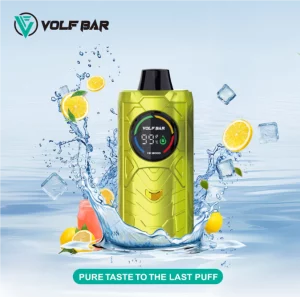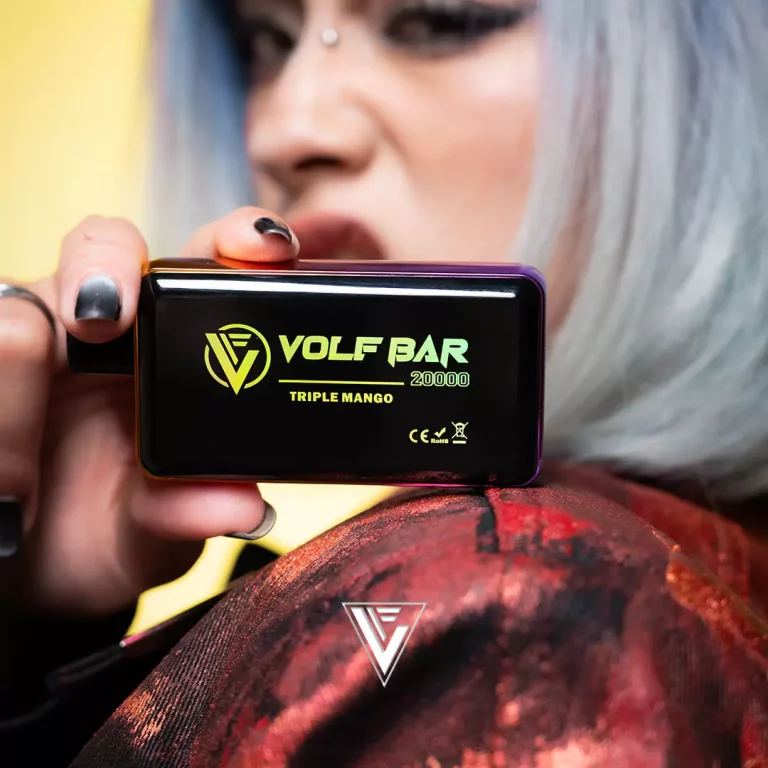Rechargeable vape pens have become increasingly popular in the vaping community, providing a more sustainable alternative to traditional disposable vape pens. These devices offer numerous benefits for both users and the environment, making them a preferable choice for environmentally conscious vapers. By exploring the fundamental characteristics of rechargeable vape pens, their operational mechanisms, and their significant role in reducing waste, we can comprehensively understand the environmental advantages they provide.
Understanding the Basics of Rechargeable Vape Pens
Differences Between Rechargeable and Disposable Vape Pens
The most pronounced difference between rechargeable and disposable vape pens lies in their longevity and reusability. Disposable vape pens typically come pre-filled with e-liquid and are designed to be discarded after the e-liquid is depleted. In contrast, rechargeable vape pens can be used for a prolonged period, as users can recharge the battery and refill the tank as required. This versatility significantly reduces the number of devices that end up in landfills, as they are built to last and can accommodate a variety of flavors, unlike single-use disposable vape options.
How Rechargeable Vape Pens Work
Rechargeable vape pens operate on a relatively straightforward mechanism that involves a rechargeable battery, a wicking system, and a heating element. Users can charge the battery via a USB or Type-C port, allowing for quick and easy recharging. Many models, like the Volfbar DTL 15000, feature advanced technology such as dual-core and dual mesh coils for enhanced flavor and vapor production even when the battery is nearing depletion. This sophisticated design ensures vapers get maximum enjoyment from each fill of e-liquid, reflecting a move towards energy-efficient and flavorful draws.
Reduction in Waste Generation
One of the most significant advantages of rechargeable vape pens is their substantial contribution to waste reduction. As global concern for environmental issues continues to grow, the waste produced by disposable vape pens—often made with non-recyclable plastic and batteries—is coming under scrutiny. Making a switch to rechargeable vape pens can play a critical role in addressing this issue.
Decreasing Landfill Contributions
Every disposable vape pen that is tossed into landfills potentially contributes to pollution and waste accumulation on our planet. Rechargeable vape pens, however, significantly reduce contributions to landfills because they are designed for multiple uses. Users do not have to purchase a new device each time they exhaust their e-liquid, as rechargeable options can be topped off and reused for extended periods. For instance, models like the Volfbar 15000 and DTL 15000 can offer an impressive number of puffs while being rechargeable, thus cutting down on the need to frequently replace devices. This responsible choice means less plastic waste and a reduced carbon footprint.
Environmental Impact of Non-Recyclable Components
Disposable vape pens are often constructed from materials that are not readily recyclable. This reinforces the environmental burden owing to their short lifespan and quick turnover. Rechargeable vape pens, on the other hand, are generally made with more durable and recyclable materials. By opting for a rechargeable device, vapers align their practices with sustainability efforts, contributing positively towards reducing the harmful environmental impacts associated with the manufacturing and disposal of multiple single-use vape products. Additionally, advanced technologies in devices like the Volfbar DTL 15000 emphasize quality materials that can withstand multiple cycles of use and repurposing without additional waste.
Not only do rechargeable vape pens present a robust solution for waste reduction, but they also enhance the vaping experience by offering better quality and performance. For example, the Volfbar’s innovative dual mesh coil technology ensures users can consistently enjoy richer vapor and enhanced flavor profiles for much longer than disposable pens can offer. This dual functionality not only satisfies vaping aficionados but also promotes sustainable practices by encouraging longer usage of a single device, minimizing waste generation in the long run.
In conclusion, the environmental benefits of using rechargeable vape pens over disposable ones are substantial. By transitioning to rechargeable options, vapers can contribute to reduced waste generation and lower landfill contributions while also enjoying advanced vaping technology. The Volfbar’s range of products exemplifies this shift towards sustainability without compromising on flavor and quality. Consequently, adopting rechargeable vape pens is a progressive step towards a more environmentally responsible vaping culture.
Lower Carbon Footprint
The adoption of rechargeable vape pens contributes significantly to a lower carbon footprint compared to disposable options. This reduction is primarily due to several factors involved in their production and distribution processes, which we will explore below.
Energy Usage in Production Processes
Rechargeable vape pens like the Volfbar DTL 15000 have been designed with efficiency in mind. The manufacturing processes for these pens typically involve lower energy consumption because they are built to endure multiple uses rather than being discarded after one use. In contrast, disposable vape pens often require a considerable amount of energy to produce, especially when factoring in the mass production of single-use batteries and plastic components. Moreover, by focusing on durable and high-quality materials, devices like the Volfbar DTL 15000 limit the need for frequent replacements, effectively reducing overall manufacturing energy usage.
The manufacturing of rechargeable devices encourages sustainable practices, where manufacturers are incentivized to invest in cleaner energy sources and technologies. This includes materials that are relatively easier to recycle, further reducing the energy expended throughout their entire lifecycle. As vapers gravitate toward rechargeable models, manufacturers could increasingly prioritize sustainability, ultimately contributing to a greener industry.
Reduced Emissions from Transport and Distribution
Transportation is another critical factor that contributes to the carbon footprint of vape products. Rechargeable vape pens significantly lessen emissions associated with transport and distribution. As these devices are designed for long-term use, fewer shipments are needed over time as consumers do not have to continually restock disposable options. For instance, with models like the Volfbar, users can enjoy up to 15,000 puffs without the need for a new device, reducing the logistical requirements in both retail and direct consumer sales.
Additionally, because rechargeable vape pens are often packed in more sustainable packaging, there is less waste generated during shipping. Efficient packaging minimizes the need for space, thus optimizing transportation logistics. The cumulative effect results in a considerable drop in carbon emissions associated with the transport of these products over time, supporting a move toward a more sustainable environmental choice for vapers.
Economic Implications Supporting Environmental Gains
The transition to rechargeable vape pens is not just an environmental concern but also a sound financial decision. Consumers will find that the economic implications support these environmental gains, ultimately presenting themselves as a cost-effective option over time through various means, which include cost-effectiveness and investments in sustainable technology.
Cost Effectiveness Over Time
Investing in rechargeable vape pens generates substantial financial savings compared to disposable options. The initial cost of a rechargeable device such as the Volfbar DTL 15000 may be higher than purchasing a single disposable pen, but this expense is quickly recouped over time. With the ability to recharge the battery and refill the e-liquid, vapers do not need to continuously buy new devices, which can add up quickly with disposable products.
Moreover, rechargeable pens typically offer better battery life and e-liquid capacity, providing more value per use. For example, utilizing the Type-C rechargeable feature allows users to fully exploit the e-liquid contained within the device efficiently while diminishing residual waste. Consequently, by calculating the long-term costs, consumers can appreciate the overall economization offered by rechargeable vape pens, presenting them as a financially attractive choice.
Investment in Sustainable Technology
The rise in popularity of rechargeable vape pens also signals a broader investment into sustainable technologies within the vaping industry. Companies like Volfbar, known for their technological innovation, are actively driving developments to enhance the usability and sustainability of their products. Research and advancements in battery technology, eco-friendly materials, and improved coil systems mean that manufacturers are redirecting resources toward creating more environmentally responsible options.
By aligning with this trend, users not only benefit from high-performance vaping experiences but also empower manufacturers to continue innovating sustainable technologies. As more companies commit to sustainability, the industry collectively shifts towards long-term viability, fostering an environment that prioritizes responsible manufacturing and consumer practices.
In conclusion, the environmental benefits of transitioning from disposable to rechargeable vape pens extend beyond just waste reduction. By adopting rechargeable options, vapers contribute to a lower carbon footprint, realizing considerable savings over time while fostering technological advancements toward sustainability. The innovative lines of products from brands such as Volfbar reflect a commitment to both a high-quality vaping experience and environmental responsibility, indicating a progressive movement within the vaping culture that embraces eco-friendliness without sacrificing performance or enjoyment. Choosing rechargeable vape pens is a pivotal step toward cultivating a more sustainable and responsible vaping industry.










